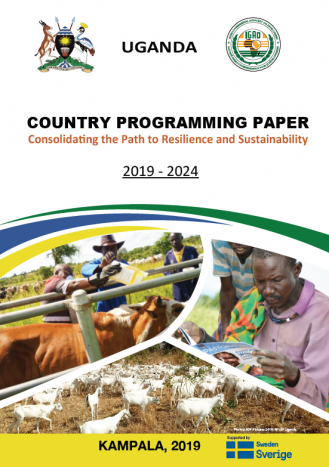Uganda
Introduction
The Uganda Country Programming Paper is the 15 year strategy identifying priorities for intervention to build resilience at national and regional levels. The CPP is in line with the IGAD Drought Disaster Resilience and Sustainability Initiative (IDDRSI) 15-year regional strategy to end drought emergencies. The objective is to increase investments in the drylands in order to improve livelihoods and enhance resilience of communities to drought by transforming the (agro)pastoralist sector into a more profitable, integrated and resilient economic system, thereby improving food and nutrition security. It serves as a planning, coordination and resource mobilisation tool for projects and investments required to contribute to ending drought emergencies. The Uganda CPP was approved by the Committee of Permanent Secretaries in 2013, but implementation of some activities started in 2011.
The objective of the CPP is to improve livelihoods and enhance the resilience of communities to drought by transforming the agro-pastoralist and pastoralist sector into a more profitable, integrated and resilient economic system thereby improving food and nutrition security.
This CPP was revised to take into account lessons from implementation of projects, mid-term review of the CPP and IDDRSI, and emerging issues in the drylands and Intergovernmental Authority on Development (IGAD) in general. These include migration – resilience nexus, gender and resilience, capacity strengthening for farmers and (agro) pastoralists as well institutions, use of indigenous local structures in peace building, among others. These issues are now incorporated in the revised CPP.
The CPP identifies eight interrelated PIAs where the necessary investment and action will help build resilience through reducing the vulnerability of target communities to climatic and economic shocks. These PIAs are: (1) Natural resources and environment management, (2) Market access, trade and financial services, (3) Enhanced production and livelihood diversification, (4) Disaster risk management, (5) Research, knowledge management and technology transfer, (6) Peace building, conflict prevention and resolution, (7) Coordination, institutional strengthening and partnerships, and (8) Human capital, gender and social development.
Uganda covers an area of 241,038 sq. km with about a third covered by fresh water bodies and wetlands. It is mainly plateau astride the equator with favorable tropical climate and average air temperature ranging from 18-28oC. The population is 36.6 million
Uganda still depends on rain-fed and subsistence agriculture. Production technology is very poor with the majority still relying on traditional and rudimentary methods like the hand hoe. With the exception of a small area under irrigation (about 15,000 ha mainly under rice), all of the crops and pastures are rain-fed. Rains are not reliable either and are characterised by delay in the onset or inadequate rains at the right time during the crop cycle.
Uganda’s drylands mainly occupy what is commonly referred to as the “cattle corridor”, an area stretching from Karamoja region in the northeast, through central to the southwest of the country. These areas are mainly rangelands and cover approximately 84,000 sq. km (about 40 percent) of the total land area of Uganda. In these areas, semi-arid and dry sub-humid conditions prevail characterised by low, unreliable and variable rainfall (450–800mm).
The weather patterns have been extreme in the cattle corridor. Droughts that used to occur on average approximately every five years are now arriving every two to three years (World Bank 2012). Prolonged localised dry spells too are occurring more frequently (2008, 2009, 2010 and 2016). The recurring droughts and high rainfall variability resulting in frequent humanitarian crises caused government, development partners and NGOs in the past to focus on saving lives and rebuilding dwindling household assets. This has been to the detriment of investment in long-term development programmes as these may not thrive where a humanitarian crisis is evolving.
In order to effectively plan for drought risk management within an overall disaster risk management framework, actions are needed to strengthen institutional capacity to manage disasters, build community based preparedness and resilience, and mainstream resilience through interventions in key sectors.
Uganda Vision 2040 is the national long-term development framework, which provides the overall guiding framework on sustainable development and socioeconomic transformation. The second National Development Plan 2016-2020 (NDPII) is aligned to Vision 2040 and sets out the roadmap towards Uganda achieving middle income status by 2020.
For investments in these areas to be fully realised, there is an implicit need to manage disaster and climate risk and to enhance the resilience of Ugandans to potential shocks. The NDP reaffirms the change in government focus from emphasising social sectors to infrastructure, security, general competitiveness and accelerating socioeconomic transformation.
Regarding resilience in the arid and semi-arid Lands (ASALs), the NDP identifies strategies to improve disaster risk management and livestock production in the cattle corridor, as well as investment in agricultural transformation, especially through provision of critical technology inputs. The Plan identifies strategies to address regional imbalances by supporting affirmative action for marginalised areas like Karamoja and northern Uganda. These strategies include improvement of security conditions, agricultural and livestock based livelihoods, and development of economically viable enterprises from dryland products and other natural resources to offer diversified livelihood choices.
The Karamoja Integrated Development Plan (KIDP) is a medium-term development framework specifically designed to address the unique context and development challenges of Karamoja sub-region. Now in its second phase, KIDP II (2015/16 – 2020/21) is being implemented with the overall objective of enhancing peace and development in Karamoja.
Other policies and initiatives include:
- National Irrigation Master Plan for Uganda (2010 – 2035) and National Irrigation Policy
- Uganda Strategic Investment Framework for Sustainable Land Management (2010-2020)
- Uganda National Climate Change Policy (2015)
- National Policy for Disaster Preparedness and Management (2011)
- Agriculture Sector Strategic Plan (2015/2016 – 2019/2020)
The National Disaster Risk Reduction (DRR) Platform, in the Office of the Prime Minister, is the main coordination mechanism for resilience initiative in Uganda. Created in 2007, this platform derives its mandate from the National Disaster Preparedness and Management Policy. It is also informed by the Uganda CPP and IDDRSI strategy. It brings together focal point technical officers from line ministries, UN agencies, non-state actors and other relevant stakeholders.
The DRR Platform therefore meets the key principles of the coordination mechanism which includes government ownership and leadership, multi-sectoral representation and participation, sustained technical assistance and capacity building. The convening authority of the DRR Platform is the Permanent Secretary in the Office of the Prime Minister. The Permanent Secretary delegated this function to the Commissioner for Disaster Preparedness. The ministries technical focal point officers head sectoral disaster risk working groups. Outputs of the sectoral working groups inform decisions of the national platform. It has structures in all tiers of government, from national to the village level.
Platform Steering Committee Member: Ms. Rose Nakabugo – Ag. Commissioner Relief, Disaster Preparedness and Management
IDDRSI Focal Point: Mr. Cyprian Dhikusooka – Principal Disaster Management Officer, Office of the Prime Minister Uganda.
News from Uganda
Events in Uganda
Resources

The development and maintenance of this portal is co-funded by the European Union.

